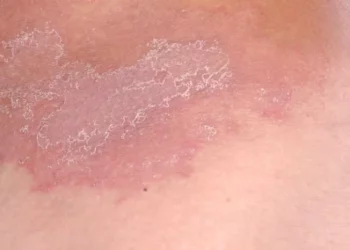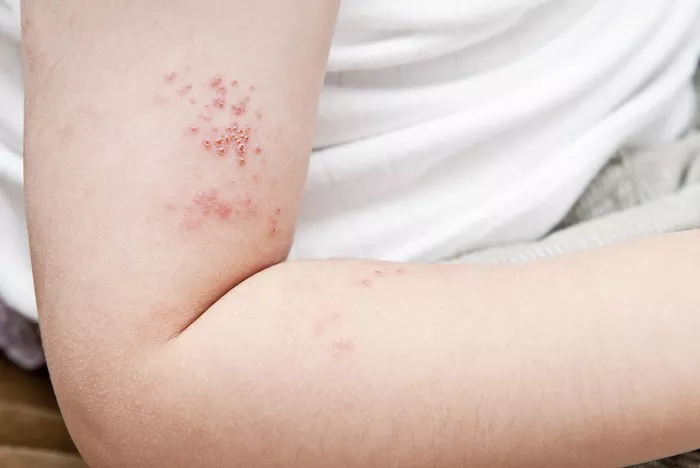Fungal infections are a common nuisance that affect millions worldwide, causing discomfort and sometimes embarrassment. Among the multitude of fungal adversaries, ringworm and Candida stand out as prevalent culprits. Despite their shared fungal origin, these conditions exhibit distinct characteristics, requiring tailored approaches for diagnosis and treatment. In this comprehensive guide, we delve into the nuances of ringworm and Candida infections, exploring their causes, symptoms, appearances, affected areas, diagnosis methods, treatment modalities, and preventive measures.
Causes:
Ringworm, contrary to its name, is not caused by worms but rather by dermatophytes, a group of fungi that thrive on keratinized tissues such as skin, hair, and nails. These microscopic fungi, including species like Trichophyton, Microsporum, and Epidermophyton, are responsible for the characteristic circular or ring-shaped rash associated with the infection.
On the other hand, Candida infections arise from an overgrowth of the Candida fungus, primarily Candida albicans. Candida is a naturally occurring organism found in the human body, typically inhabiting the skin, mouth, gastrointestinal tract, and genital area. However, under certain conditions such as weakened immune function, hormonal imbalances, or antibiotic use, Candida can proliferate excessively, leading to infections known as candidiasis.
Symptoms:
Distinguishing between ringworm and Candida infections often relies on recognizing their unique symptomatology.
Ringworm manifests as circular or ring-shaped rashes with well-defined borders. Affected areas may appear red, scaly, and inflamed, accompanied by itching and discomfort. The lesions often have a raised, red border with a clearer center, resembling the outline of a ring, hence the name “ringworm.”
Conversely, Candida infections present with a spectrum of symptoms depending on the affected area. Common manifestations include redness, itching, burning sensations, and the presence of white patches or pustules. In oral candidiasis, also known as oral thrush, white patches may develop on the tongue, inner cheeks, or roof of the mouth, often accompanied by discomfort or difficulty swallowing. Genital candidiasis, commonly known as a yeast infection, may cause vaginal itching, burning, and abnormal discharge in women and redness or irritation on the penis in men.
Appearance:
The appearance of ringworm and Candida infections offers valuable diagnostic clues to healthcare providers.
Ringworm lesions typically exhibit a raised, red border that expands outward, forming a circular or oval shape. The central area of the lesion may appear clearer or less inflamed compared to the periphery, contributing to the characteristic ring-like appearance.
In contrast, Candida infections commonly present as red, inflamed rashes with white patches or plaques. These patches may have a cottage cheese-like texture and are often surrounded by areas of erythema or redness. In oral candidiasis, the white patches may be easily wiped away, revealing red, irritated mucosa underneath.
Affected Areas:
While both ringworm and Candida infections can affect various parts of the body, they exhibit preferences for specific anatomical regions.
Ringworm commonly targets areas with warm and moist environments, such as the scalp, groin, feet (athlete’s foot), and nails (onychomycosis). These locations provide optimal conditions for fungal growth and colonization, facilitating the establishment of infection.
Candida infections, on the other hand, can occur in diverse anatomical sites, including the mouth, genitals, skin folds, and nails. Oral candidiasis predominantly affects infants, the elderly, and individuals with compromised immune systems, while genital candidiasis is more prevalent among women, particularly those with conditions such as diabetes or pregnancy.
Diagnosis:
Accurate diagnosis of ringworm and Candida infections is essential for initiating prompt and effective treatment. Healthcare providers employ various methods to confirm fungal involvement.
Ringworm is often diagnosed through visual examination of the characteristic skin lesions. Dermatologists may use a Wood’s lamp, a specialized ultraviolet light, to highlight fungal infections, as certain dermatophytes fluoresce under UV illumination. In some cases, skin scraping or fungal culture may be performed to confirm the diagnosis, especially if the presentation is atypical or other skin conditions are suspected.
Similarly, Candida infections are typically diagnosed based on clinical evaluation and visual inspection of the affected area. In oral candidiasis, healthcare providers may perform a swab test to collect samples for microscopic examination or culture. Additionally, in cases of persistent or recurrent candidiasis, further evaluation to identify underlying predisposing factors, such as immunodeficiency or uncontrolled diabetes, may be warranted.
Treatment:
Fortunately, both ringworm and Candida infections respond well to antifungal interventions, although the specific treatment approach may vary depending on the severity and location of the infection.
For ringworm, topical antifungal creams or ointments containing ingredients such as clotrimazole, miconazole, or terbinafine are commonly prescribed for localized lesions. In cases of extensive or recalcitrant infection, oral antifungal medications like fluconazole or griseofulvin may be recommended to target the underlying fungal burden systemically.
Similarly, Candida infections are typically treated with antifungal agents, either topically or orally, depending on the extent and severity of the infection. Antifungal creams or ointments containing nystatin, clotrimazole, or ketoconazole are effective for superficial candidiasis, while oral antifungal medications like fluconazole or itraconazole may be necessary for systemic or recurrent infections.
Prevention:
Preventing recurrent fungal infections involves adopting proactive measures to minimize exposure and mitigate risk factors.
Both ringworm and Candida infections can be prevented by maintaining good hygiene practices, including regular bathing, thorough drying of skin folds, and keeping affected areas clean and dry. Avoiding close contact with infected individuals or animals, especially in communal settings such as locker rooms or pet shelters, can help reduce the risk of transmission.
Furthermore, managing underlying conditions that predispose individuals to fungal infections, such as diabetes, obesity, or immunodeficiency, is paramount for preventing recurrence. Implementing lifestyle modifications, such as maintaining a healthy diet, managing stress, and avoiding unnecessary antibiotic use, can support immune function and minimize the risk of fungal overgrowth.
Conclusion
In conclusion, while ringworm and Candida infections share a fungal etiology, their distinct clinical presentations, affected areas, diagnostic approaches, and treatment modalities necessitate a nuanced understanding for accurate management. By familiarizing oneself with the unique characteristics of these fungal foes and implementing preventive strategies, healthcare providers and individuals alike can effectively combat fungal infections and promote optimal skin health and well-being.
Related Topics:
What Is the Best Injection for Ringworm


























